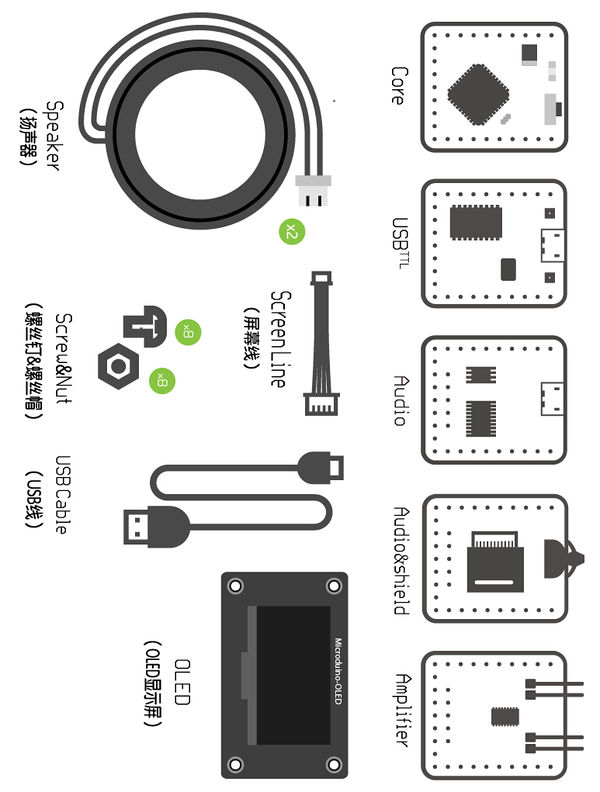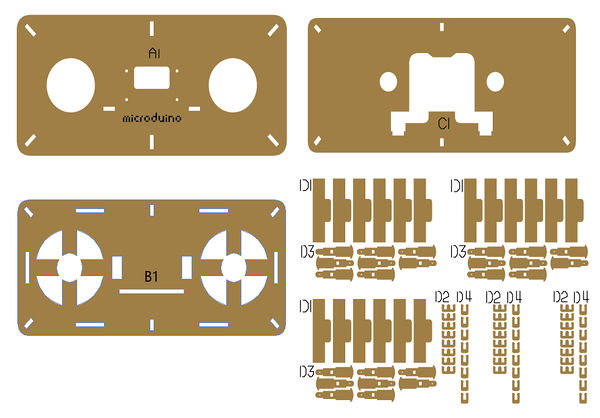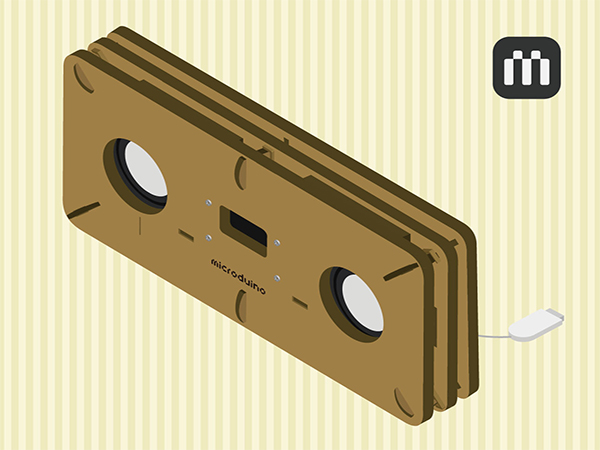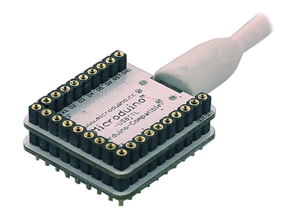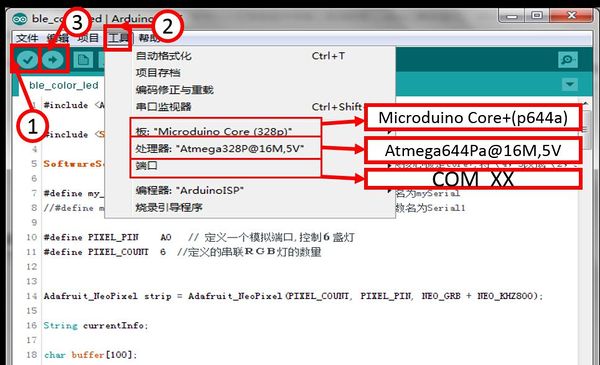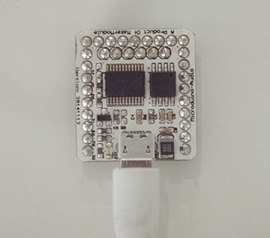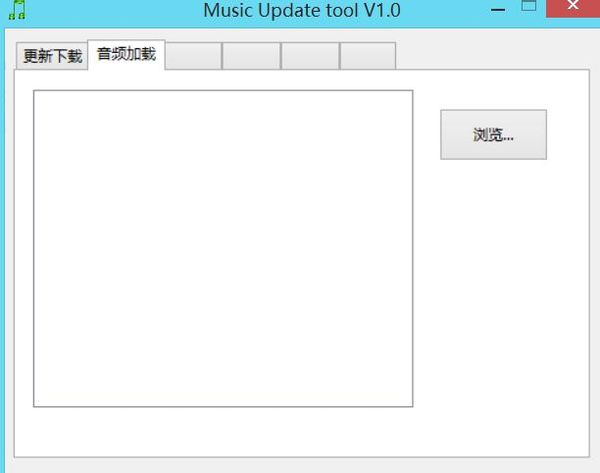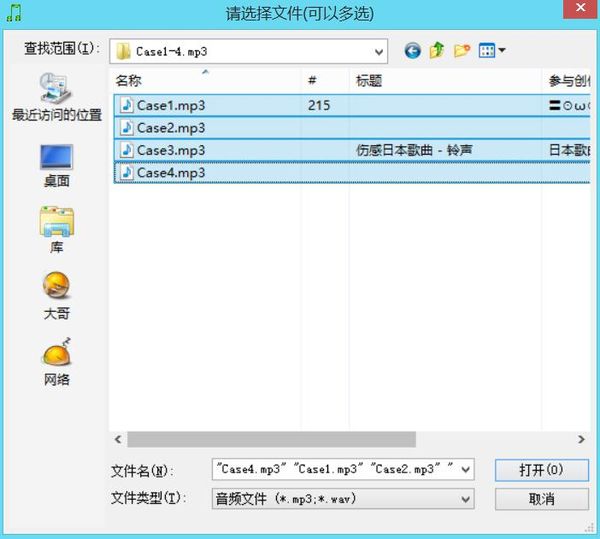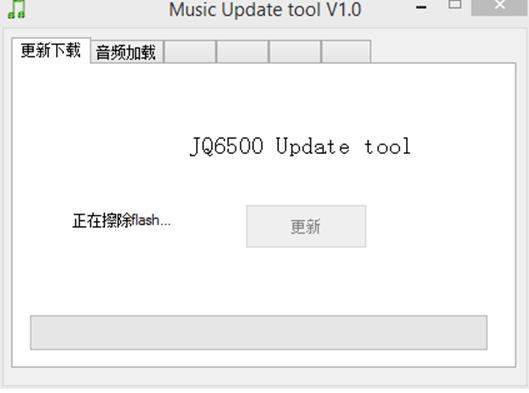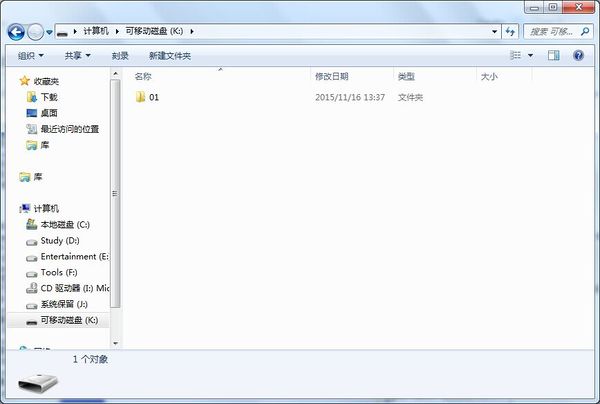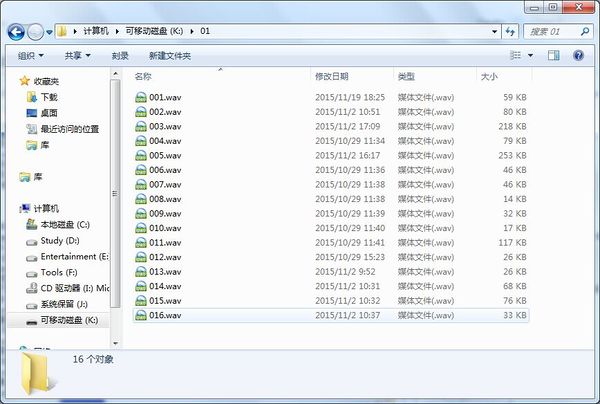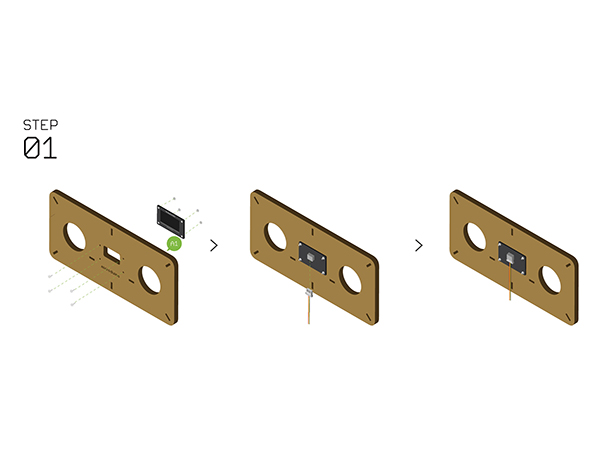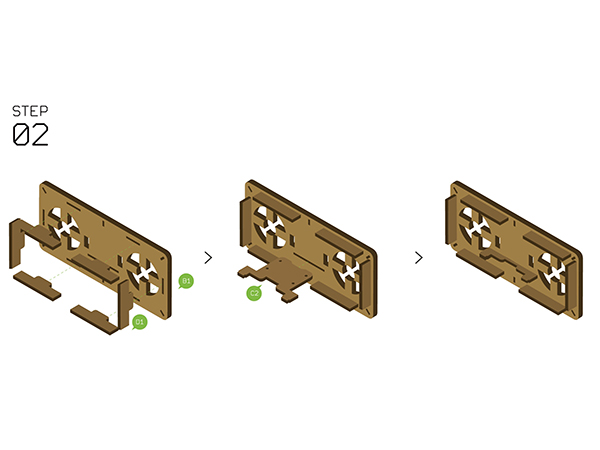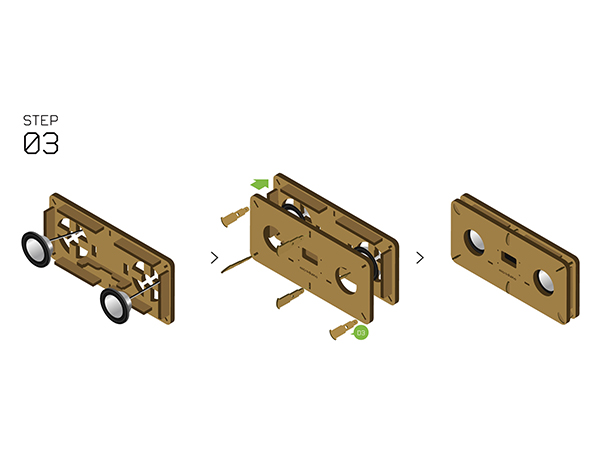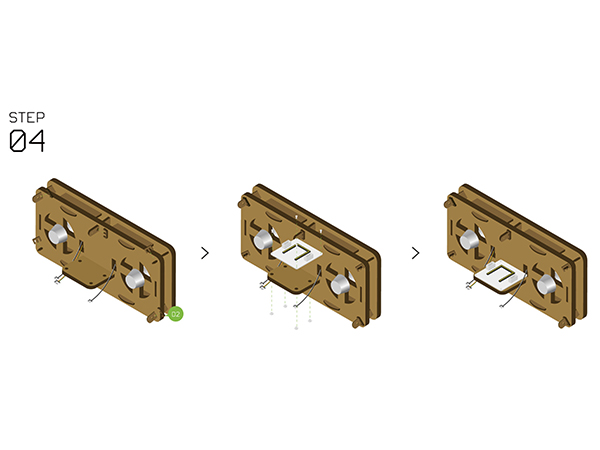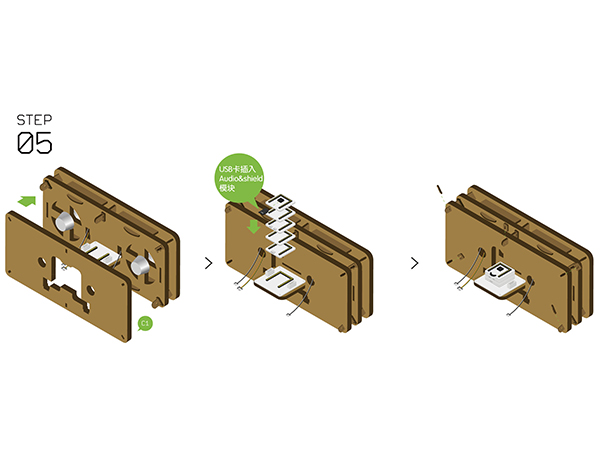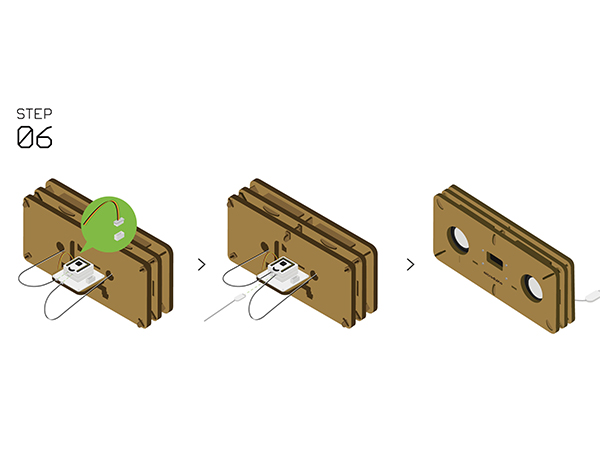|
|
| 第128行: |
第128行: |
| | 在uiSetup中更改阈值设定 | | 在uiSetup中更改阈值设定 |
| | ==程序说明== | | ==程序说明== |
| − | | + | 主程序部分 |
| − | CardPlayer.ino
| |
| | <source lang="cpp"> | | <source lang="cpp"> |
| − | #include "audio.h"
| |
| − | #include "JQ6500.h"
| |
| − | #include "JQ6500_def.h"
| |
| − | #include <SoftwareSerial.h>
| |
| − | #include <EEPROM.h>
| |
| − | //定义蓝牙通信串口
| |
| − | SoftwareSerial mySerial(2, 3); // RX, TX
| |
| − | #define VOICE mySerial
| |
| − | JQ6500 AUDIO(&VOICE); //声明audio类
| |
| − |
| |
| − |
| |
| − | #define PIN_key A0 //灰度传感器输入引脚
| |
| − |
| |
| − | #include <Adafruit_NeoPixel.h>
| |
| − | #define PIN 6 //Lantern灯引脚
| |
| − | Adafruit_NeoPixel strip = Adafruit_NeoPixel(1, PIN, NEO_GRB + NEO_KHZ800);
| |
| − |
| |
| − | #define music_num_MIN 1 //歌曲最小数,固定
| |
| − | #define music_num_MAX 10 //歌曲最大数,可改
| |
| − |
| |
| − | int music_vol=26; //初始音量0~30
| |
| − |
| |
| − | //---------------------------------
| |
| − | boolean music_status = false; //歌曲播放状态
| |
| − | int music_num = 1; //歌曲序号
| |
| − |
| |
| − | void setup()
| |
| − | {
| |
| − | Serial.begin(9600);
| |
| − |
| |
| − | strip.begin(); //初始化LED
| |
| − | strip.show(); // Initialize all pixels to 'off'
| |
| − |
| |
| − | colorWipe(strip.Color(0, 255, 200), 10); //初始化颜色 R,G,B
| |
| − |
| |
| − | AUDIO.init(DEVICE_TF,MODE_FOL,music_vol); //初始化mp3模块
| |
| − | AUDIO.pause(); //暂停播放
| |
| − | }
| |
| − |
| |
| − | unsigned long time1,time2;
| |
| − |
| |
| − | #define paper_val_MIN 100 //黑白传感器触发小值
| |
| − | #define paper_val_MAX 600 //黑白传感器触发大值
| |
| − | boolean paper_sta=false;
| |
| − | int paper_num=0; //纸张格数
| |
| − |
| |
| − | int LED_vol_sta=0; //LED呼吸灯反转
| |
| − | int LED_vol=0; //LED呼吸灯值
| |
| − |
| |
| − |
| |
| − | boolean key=HIGH; //按键
| |
| − | boolean key_cache=LOW; //检测按键松开缓存
| |
| − |
| |
| | boolean vokey(boolean _vokey) | | boolean vokey(boolean _vokey) |
| | { | | { |
| 第280行: |
第226行: |
| | } | | } |
| | </source> | | </source> |
| − | Audio.h
| |
| − | <source lang="cpp">
| |
| − | #include "arduino.h"
| |
| − | #include <EEPROM.h>
| |
| − |
| |
| − | #define EEPROM_write(address, p) {int i = 0; byte *pp = (byte*)&(p);for(; i < sizeof(p); i++) EEPROM.write(address+i, pp[i]);}
| |
| − | #define EEPROM_read(address, p) {int i = 0; byte *pp = (byte*)&(p);for(; i < sizeof(p); i++) pp[i]=EEPROM.read(address+i);}
| |
| − |
| |
| − | struct config_type
| |
| − | {
| |
| − | int EEPROM_music_mode;
| |
| − | int EEPROM_music_vol;
| |
| − | };
| |
| − |
| |
| − | config_type config; // 定义结构变量config,并定义config的内容
| |
| − |
| |
| − | void eeprom_WRITE(int mode, int vol)
| |
| − | {
| |
| − | config_type config; // 定义结构变量config,并定义config的内容
| |
| − | config.EEPROM_music_mode=mode;
| |
| − | config.EEPROM_music_vol=vol;
| |
| − |
| |
| − | EEPROM_write(0, config); // 变量config存储到EEPROM,地址0写入
| |
| − | }
| |
| − |
| |
| − | config_type eeprom_READ()
| |
| − | {
| |
| − | config_type config_readback;
| |
| − | EEPROM_read(0, config_readback);
| |
| − | return config_readback;
| |
| − | }
| |
| − | </source>
| |
| − | JQ6500.cpp
| |
| − | <source lang="cpp">
| |
| − | //
| |
| − | // JQ6500 audio library for Arduino
| |
| − | //
| |
| − |
| |
| − | #include "JQ6500.h"
| |
| − | #include "JQ6500_def.h"
| |
| − | #include <SoftwareSerial.h>
| |
| − |
| |
| − | JQ6500::JQ6500(SoftwareSerial *ser) {
| |
| − | common_init();
| |
| − | audioSwSerial = ser;
| |
| − | }
| |
| | | | |
| − | JQ6500::JQ6500(HardwareSerial *ser) {
| |
| − | common_init();
| |
| − | audioHwSerial = ser;
| |
| − | }
| |
| − |
| |
| − | void JQ6500::common_init(void){
| |
| − | audioSwSerial = NULL;
| |
| − | audioHwSerial = NULL;
| |
| − |
| |
| − | }
| |
| − |
| |
| − | void JQ6500::begin(uint16_t baud){
| |
| − | if(audioSwSerial) audioSwSerial->begin(baud);
| |
| − | else audioHwSerial->begin(baud);
| |
| − | delay(10);
| |
| − | }
| |
| − |
| |
| − | void JQ6500::sendCommand(uint8_t cmd, uint8_t *buf, uint16_t len){
| |
| − | sendBuffer[0] = STX;
| |
| − | sendBuffer[1] = len+2;
| |
| − | sendBuffer[2] = cmd;
| |
| − | if(len > 0)
| |
| − | memcpy(sendBuffer+3, buf, len);
| |
| − | sendBuffer[len+3] = ETX;
| |
| − | if(audioSwSerial)
| |
| − | audioSwSerial->write(sendBuffer, 4+len);
| |
| − | else
| |
| − | audioHwSerial->write(sendBuffer, 4+len);
| |
| − | delay(100);
| |
| − | }
| |
| − |
| |
| − | void JQ6500::next(){
| |
| − |
| |
| − | sendCommand(CMD_NEXT, NULL, 0);
| |
| − | }
| |
| − |
| |
| − | void JQ6500::prev(){
| |
| − |
| |
| − | sendCommand(CMD_PREV, NULL, 0);
| |
| − | }
| |
| − |
| |
| − | void JQ6500::choose(uint16_t num){
| |
| − | cmdBuffer[0] = num>>8;
| |
| − | cmdBuffer[1] = num&0x00FF;
| |
| − | sendCommand(CMD_CHOOSE, cmdBuffer, 2);
| |
| − | }
| |
| − |
| |
| − | void JQ6500::volUp(){
| |
| − |
| |
| − | sendCommand(CMD_UP, NULL, 0);
| |
| − | }
| |
| − |
| |
| − | void JQ6500::volDown(){
| |
| − |
| |
| − | sendCommand(CMD_DOWN, NULL, 0);
| |
| − | }
| |
| − |
| |
| − | void JQ6500::volumn(uint8_t vol){
| |
| − | cmdBuffer[0] = vol;
| |
| − | sendCommand(CMD_VOL, cmdBuffer, 1);
| |
| − | }
| |
| − |
| |
| − | void JQ6500::eq(uint8_t eq){
| |
| − | cmdBuffer[0] = eq;
| |
| − | sendCommand(CMD_EQ, cmdBuffer, 1);
| |
| − | }
| |
| − |
| |
| − | void JQ6500::setDevice(uint8_t device){
| |
| − | cmdBuffer[0] = device;
| |
| − | sendCommand(CMD_DEVICE, cmdBuffer, 1);
| |
| − | }
| |
| − |
| |
| − | void JQ6500::sleep(){
| |
| − |
| |
| − | sendCommand(CMD_SLEEP, NULL, 0);
| |
| − | }
| |
| − |
| |
| − | void JQ6500::reset(){
| |
| − |
| |
| − | sendCommand(CMD_RESET, NULL, 0);
| |
| − | }
| |
| − |
| |
| − | void JQ6500::play(){
| |
| − |
| |
| − | sendCommand(CMD_PLAY, NULL, 0);
| |
| − | }
| |
| − |
| |
| − | void JQ6500::pause(){
| |
| − |
| |
| − | sendCommand(CMD_PAUSE, NULL, 0);
| |
| − | }
| |
| − |
| |
| − | void JQ6500::folder(uint8_t temp){
| |
| − | cmdBuffer[0] = temp;
| |
| − | sendCommand(CMD_FOLDER, cmdBuffer, 1);
| |
| − | }
| |
| − |
| |
| − | void JQ6500::setMode(uint8_t temp){
| |
| − | cmdBuffer[0] = temp;
| |
| − | sendCommand(CMD_MODE, cmdBuffer, 1);
| |
| − | }
| |
| − |
| |
| − | void JQ6500::chooseFile(uint8_t folder, uint8_t file){
| |
| − | cmdBuffer[0] = folder;
| |
| − | cmdBuffer[1] = file;
| |
| − | sendCommand(CMD_FILE, cmdBuffer, 2);
| |
| − | }
| |
| − |
| |
| − | void JQ6500::init(uint8_t device, uint8_t mode, uint8_t vol){
| |
| − | begin(9600);
| |
| − | delay(300);
| |
| − | reset();
| |
| − | setDevice(device);
| |
| − | setMode(mode);
| |
| − | volumn(vol);
| |
| − | }
| |
| − |
| |
| − |
| |
| − | uint16_t JQ6500::dataParse(){
| |
| − | uint16_t sum = 0;
| |
| − | uint8_t temp;
| |
| − | if(audioSwSerial){
| |
| − | while(audioSwSerial->available()){
| |
| − | temp = char(audioSwSerial->read());
| |
| − | if(temp>47&&temp<58){
| |
| − | temp -=48;
| |
| − | }else if(temp>96&&temp<103){
| |
| − | temp -=87;
| |
| − | }
| |
| − | sum = sum*16+temp;
| |
| − | }
| |
| − | }else{
| |
| − | while(audioHwSerial->available()){
| |
| − | temp = char(audioHwSerial->read());
| |
| − | if(temp>47&&temp<58){
| |
| − | temp -=48;
| |
| − | }else if(temp>96&&temp<103){
| |
| − | temp -=87;
| |
| − | }
| |
| − | sum = sum*16+temp;
| |
| − | }
| |
| − | }
| |
| − | return sum;
| |
| − | }
| |
| − |
| |
| − | uint16_t JQ6500::queryNum(uint8_t cmd){
| |
| − | if(audioSwSerial)
| |
| − | audioSwSerial->flush();
| |
| − | else
| |
| − | audioHwSerial->flush();
| |
| − | sendCommand(cmd, NULL, 0);
| |
| − | delay(100);
| |
| − | return dataParse();
| |
| − | }
| |
| − |
| |
| − | uint16_t JQ6500::queryTF(){
| |
| − | return queryNum(QUERY_TF);
| |
| − | }
| |
| − |
| |
| − | uint16_t JQ6500::queryTFFile(){
| |
| − | return queryNum(QUERY_TF_FILE);
| |
| − | }
| |
| − |
| |
| − | uint16_t JQ6500::queryFlash(){
| |
| − | return queryNum(QUERY_FLASH);
| |
| − | }
| |
| − |
| |
| − | uint16_t JQ6500::queryFlashFile(){
| |
| − | return queryNum(QUERY_FLASH_FILE);
| |
| − | }
| |
| − |
| |
| − | uint16_t JQ6500::queryTotalTime(){
| |
| − | return queryNum(QUERY_TTIME);
| |
| − | }
| |
| − |
| |
| − | uint16_t JQ6500::queryPlayTime(){
| |
| − | return queryNum(QUERY_PTIME);
| |
| − | }
| |
| − |
| |
| − | String JQ6500::queryName(){
| |
| − | String nameCache = "";
| |
| − | char temp;
| |
| − | uint16_t i = 0;
| |
| − | if(audioSwSerial)
| |
| − | audioSwSerial->flush();
| |
| − | else
| |
| − | audioHwSerial->flush();
| |
| − | sendCommand(QUERY_NAME, NULL, 0);
| |
| − | delay(100);
| |
| − | if(audioSwSerial){
| |
| − | while(audioSwSerial->available()){
| |
| − | temp = audioSwSerial->read();
| |
| − | nameCache += temp;
| |
| − | if(temp == 32){
| |
| − | i++;
| |
| − | }else{
| |
| − | i = 0;
| |
| − | }
| |
| − | if(i >= 3){
| |
| − | i = 0;
| |
| − | nameCache.replace(" ", ".");
| |
| − | }
| |
| − | }
| |
| − | }else{
| |
| − | while(audioHwSerial->available()){
| |
| − | temp = audioHwSerial->read();
| |
| − | nameCache += temp;
| |
| − | if(temp == 32){
| |
| − | i++;
| |
| − | }else{
| |
| − | i = 0;
| |
| − | }
| |
| − | if(i >= 3){
| |
| − | i = 0;
| |
| − | nameCache.replace(" ", ".");
| |
| − | }
| |
| − | }
| |
| − | }
| |
| − | return nameCache;
| |
| − | }
| |
| − |
| |
| − | //
| |
| − | // END OF FILE
| |
| − | //
| |
| − | </source>
| |
| − | JQ6500.h
| |
| − | <source lang="cpp">
| |
| − | //
| |
| − | // JQ6500 audio library for Arduino
| |
| − | // VERSION: 0.1.0
| |
| − | //
| |
| − |
| |
| − | #ifndef __JQ6500_H__
| |
| − | #define __JQ6500_H__
| |
| − |
| |
| − | #include <Arduino.h>
| |
| − | #include <SoftwareSerial.h>
| |
| − |
| |
| − | #define AUDIO_VERSION "0.1.0"
| |
| − |
| |
| − | #define STX 0x7E
| |
| − | #define ETX 0xEF
| |
| − |
| |
| − | #define CMD_NEXT 0x01
| |
| − | #define CMD_PREV 0x02
| |
| − | #define CMD_CHOOSE 0x03
| |
| − | #define CMD_UP 0x04
| |
| − | #define CMD_DOWN 0x05
| |
| − | #define CMD_VOL 0x06
| |
| − | #define CMD_EQ 0x07
| |
| − | #define CMD_DEVICE 0x09
| |
| − | #define CMD_SLEEP 0x0A
| |
| − | #define CMD_RESET 0x0C
| |
| − | #define CMD_PLAY 0x0D
| |
| − | #define CMD_PAUSE 0x0E
| |
| − | #define CMD_FOLDER 0x0F
| |
| − | #define CMD_MODE 0x11
| |
| − | #define CMD_FILE 0x12
| |
| − |
| |
| − | #define QUERY_STA 0x42
| |
| − | #define QUERY_VOL 0x43
| |
| − | #define QUERY_EQ 0x44
| |
| − | #define QUERY_MODE 0x45
| |
| − | #define QUERY_VERSION 0x46
| |
| − | #define QUERY_TF 0x47
| |
| − | #define QUERY_DISK 0x48
| |
| − | #define QUERY_FLASH 0x49
| |
| − | #define QUERY_TF_FILE 0x4B
| |
| − | #define QUERY_DISK_FILE 0x4C
| |
| − | #define QUERY_FLASH_FILE 0x4D
| |
| − | #define QUERY_PTIME 0x50
| |
| − | #define QUERY_TTIME 0x51
| |
| − | #define QUERY_NAME 0x52
| |
| − | #define QUERY_FILES 0x53
| |
| − |
| |
| − |
| |
| − | class JQ6500{
| |
| − | public:
| |
| − | JQ6500(SoftwareSerial *ser);
| |
| − | JQ6500(HardwareSerial *ser);
| |
| − |
| |
| − | void begin(uint16_t baud);
| |
| − | void next();
| |
| − | void prev();
| |
| − | void choose(uint16_t num);
| |
| − | void volUp();
| |
| − | void volDown();
| |
| − | void volumn(uint8_t vol);
| |
| − | void eq(uint8_t eq);
| |
| − | void setDevice(uint8_t device);
| |
| − | void sleep();
| |
| − | void reset();
| |
| − | void play();
| |
| − | void pause();
| |
| − | void folder(uint8_t temp);
| |
| − | void setMode(uint8_t temp);
| |
| − | void chooseFile(uint8_t folder, uint8_t file);
| |
| − | void init(uint8_t device, uint8_t mode, uint8_t vol);
| |
| − |
| |
| − | uint16_t queryTF();
| |
| − | uint16_t queryTFFile();
| |
| − | uint16_t queryFlash();
| |
| − | uint16_t queryFlashFile();
| |
| − | uint16_t queryTotalTime();
| |
| − | uint16_t queryPlayTime();
| |
| − | String queryName();
| |
| − |
| |
| − | private:
| |
| − | uint8_t sendBuffer[8];
| |
| − | uint8_t cmdBuffer[8];
| |
| − |
| |
| − | SoftwareSerial *audioSwSerial;
| |
| − | HardwareSerial *audioHwSerial;
| |
| − |
| |
| − | void common_init(void);
| |
| − | void sendCommand(uint8_t cmd, uint8_t *buf, uint16_t len);
| |
| − | uint16_t dataParse();
| |
| − | uint16_t queryNum(uint8_t cmd);
| |
| − | };
| |
| − |
| |
| − | #endif
| |
| − | //
| |
| − | // END OF FILE
| |
| − | //
| |
| − | </source>
| |
| − | JQ6500_def
| |
| − | <source lang="cpp">
| |
| − | //
| |
| − | // AM2321 Temperature & Humidity Sensor library for Arduino
| |
| − | // VERSION: 0.1.0
| |
| − | //
| |
| − | // The MIT License (MIT)
| |
| − | //
| |
| − | // Copyright (c) 2013 Wang Dong
| |
| − | //
| |
| − | // Permission is hereby granted, free of charge, to any person obtaining a copy
| |
| − | // of this software and associated documentation files (the "Software"), to deal
| |
| − | // in the Software without restriction, including without limitation the rights
| |
| − | // to use, copy, modify, merge, publish, distribute, sublicense, and/or sell
| |
| − | // copies of the Software, and to permit persons to whom the Software is
| |
| − | // furnished to do so, subject to the following conditions:
| |
| − | //
| |
| − | // The above copyright notice and this permission notice shall be included in
| |
| − | // all copies or substantial portions of the Software.
| |
| − | //
| |
| − | // THE SOFTWARE IS PROVIDED "AS IS", WITHOUT WARRANTY OF ANY KIND, EXPRESS OR
| |
| − | // IMPLIED, INCLUDING BUT NOT LIMITED TO THE WARRANTIES OF MERCHANTABILITY,
| |
| − | // FITNESS FOR A PARTICULAR PURPOSE AND NONINFRINGEMENT. IN NO EVENT SHALL THE
| |
| − | // AUTHORS OR COPYRIGHT HOLDERS BE LIABLE FOR ANY CLAIM, DAMAGES OR OTHER
| |
| − | // LIABILITY, WHETHER IN AN ACTION OF CONTRACT, TORT OR OTHERWISE, ARISING FROM,
| |
| − | // OUT OF OR IN CONNECTION WITH THE SOFTWARE OR THE USE OR OTHER DEALINGS IN
| |
| − | // THE SOFTWARE.
| |
| − | //
| |
| − |
| |
| − | #ifndef __JQ6500_DEF_H__
| |
| − | #define __JQ6500_DEF_H__
| |
| − |
| |
| − | #define EQ_NORMAL 0x00
| |
| − | #define EQ_POP 0x01
| |
| − | #define EQ_ROCK 0x02
| |
| − | #define EQ_JAZZ 0x03
| |
| − | #define EQ_CLASSIC 0x04
| |
| − | #define EQ_BASE 0x05
| |
| − |
| |
| − | #define DEVICE_U 0x00
| |
| − | #define DEVICE_TF 0x01
| |
| − | #define DEVICE_AUX 0x02
| |
| − | #define DEVICE_SLEEP 0x03
| |
| − | #define DEVICE_FLASH 0x04
| |
| − |
| |
| − | #define MODE_ALL 0x00
| |
| − | #define MODE_FOL 0x01
| |
| − | #define MODE_ONE 0x02
| |
| − | #define MODE_RAM 0x03
| |
| − | #define MODE_ONE_STOP 0x04
| |
| − |
| |
| − |
| |
| − | #endif
| |
| − | //
| |
| − | // END OF FILE
| |
| − | //
| |
| − | </source>
| |
| | ==视频== | | ==视频== |
